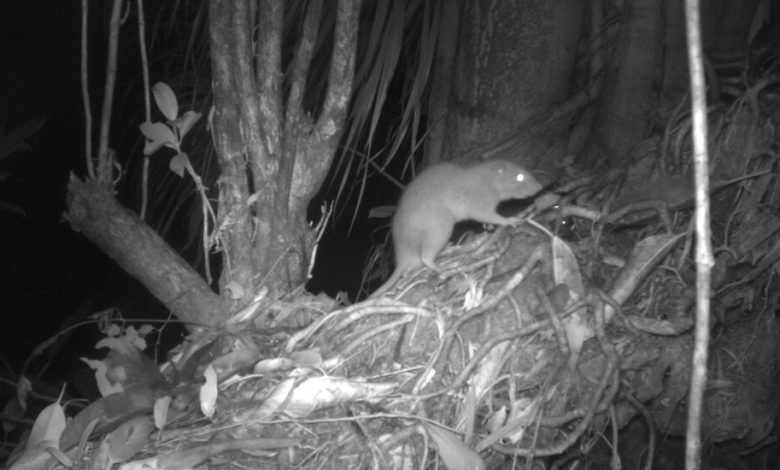Rare Giant Rat Is Photographed Alive for First Time

For years, the Indigenous people on Vangunu, one of the Solomon Islands, had insisted a critically endangered giant rat that could chew through coconuts still lived among the trees of the forest, though its numbers had dwindled as loggers destroyed its habitat.
None had been documented alive before. But it turned out the people of the village of Zaira were right.
Researchers from the University of Melbourne and Solomon Islands National University, with help from the local community, recently captured photos of the Vangunu giant rat, or Uromys vika. It is one of the world’s rarest rodents and Vangunu is the only island it is known to inhabit.
The rat, called Vika by the people of Vangunu, is at least twice the size of a common rat, at about 18 inches, half of which accounts for the tail, researchers said. The sightings were published in the academic journal Ecology and Evolution on Nov. 20.
Working with the community of Zaira was key to finding the rat, said Kevin Sese of the Solomon Islands National University, who is from the island of Guadalcanal, southwest of Vangunu Island.
“The knowledge is with the people. They are the custodians of the local knowledge,” said Mr. Sese, a senior author of the paper. “If it weren’t for them we wouldn’t have known where to place the cameras.”
The researchers changed the kind of bait they were using from peanut butter, which would rot after sitting out for long periods of time, to sesame oil. Just a few days after the bait was set out, the rats started to emerge.
Over six months, the authors of the paper captured 95 images of four different rats.
“I was shocked and amazed really because, as I said, I’ve tried this a number of times before and only ever got black rats,” said Dr. Tyrone Lavery of the University of Melbourne School of Biosciences, the lead author of the paper.
This isn’t the first time Dr. Lavery tried to photograph the rat.
He and another researcher did intensive surveys from 2010 to 2015 using camera traps, aluminum box traps, spotlighting, and active searches of hollow trees, but couldn’t find any Vika.
Then in 2015, Dr. Lavery obtained the first DNA sample from a Vika rat that had died after loggers cut down a tree it was living in. He compared the DNA and the skull to other rodents from Australia, New Guinea and the Solomon Islands to show that it was a new species.
Years later, that wasn’t enough to prove the species was still alive, however.
Zaira has long been battling to have its patch of forest recognized as a protected area under the Solomon Islands Protected Areas Act 2010, Dr. Lavery said. Now that the images show the Vika are still out there, he said, he hopes that will strengthen the village’s case.
The rat’s survival is important for the local ecosystem, where it’s part of the food chain, he said. And it has cultural significance for the people of Zaira, whose oral history speaks of the rat, and gave ideas of where it might be in the forest and the type of nuts it ate.
But logging has long been a big part of the economy of the Solomon Islands, the 12th largest exporter of rough wood in the world, according to The Observatory of Economic Complexity, a data visualization tool for international trade data.
The logging has harmed the islands’ environment, scientists say.
“I think the Zaira people are also aware of the effects of logging on the other parts of the island,” Mr. Sese said. “And I think it’s one of the things that drove them to conserve the forest.”




